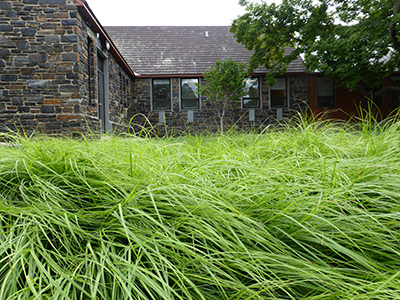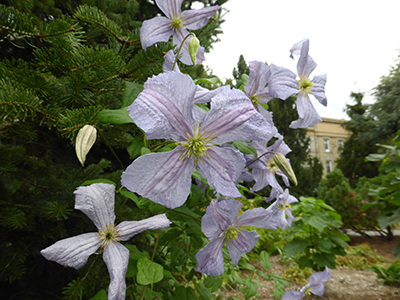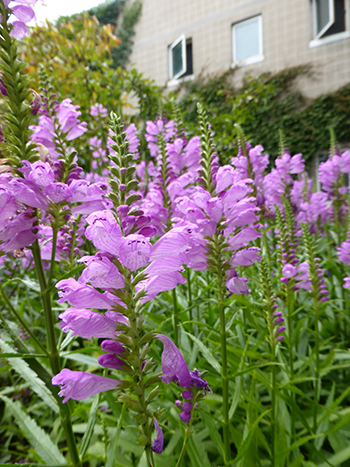Plants of the Week: September 22
 Carex brevior, common throughout most of the United States, owes its prevalence to its adaptable nature. The shortbeak or plains oval sedge is most often encountered in dry woodlands and prairies. Listed by the US Fish and Wildlife Service as a facultative plant, it is equally likely to be found in wetlands or non-wetlands. As such C. brevior is one of several sedges being used in retention beds around Worth Health Center. The beds fluctuate between dry conditions and periodic flooding from precipitation and storm water collection. The medium green sedge has a fountaining habit ranging from 12 to 30 inches in height. The seeds are distinctive flat discs, and are a warm camel color. Photo credit: J.Coceano
Carex brevior, common throughout most of the United States, owes its prevalence to its adaptable nature. The shortbeak or plains oval sedge is most often encountered in dry woodlands and prairies. Listed by the US Fish and Wildlife Service as a facultative plant, it is equally likely to be found in wetlands or non-wetlands. As such C. brevior is one of several sedges being used in retention beds around Worth Health Center. The beds fluctuate between dry conditions and periodic flooding from precipitation and storm water collection. The medium green sedge has a fountaining habit ranging from 12 to 30 inches in height. The seeds are distinctive flat discs, and are a warm camel color. Photo credit: J.Coceano
Clematis viticella is the parent species of dozens of well-known hybrids such as ‘Betty Corning’, ‘Venosa Violacea’, ‘Etoile Violette’, and ‘Purpurea Plena Elegans’. Clematis ‘Emilia Plater’ is perhaps a lesser known viticella but has been particularly remarkable this season in the Nason Garden. The cultivar has a rich and storied history. Bred by an 85-year old monk and named in honor of a young Polish freedom fighter, the vine sports widely spaced pale purple tepals with undulating edges, recurving tips, and shaded central bars and darker veins. Visit the Clematis International webpage for a more in-depth look at this fascinating cultivar. Photo credit: J.Coceano
Garden location: growing up Abies bornmuelleriana in the John W. Nason Garden
Physotegia virginiana are floriferous late summer blooming perennials with the unfortunate tendency to splay and flop. The cultivar ‘Vivid’ retains all the positive attributes on a compact, upright form. The herbaceous plant averages 1-2′ tall and bears stiff, square stems with dense spikes of rich pink, tubular, two-lipped, snapdragon-like flowers. Blooms open from bottom to top on each spike. Photo credit: J. Coceano
Garden location: Pollinator Garden







No Comments